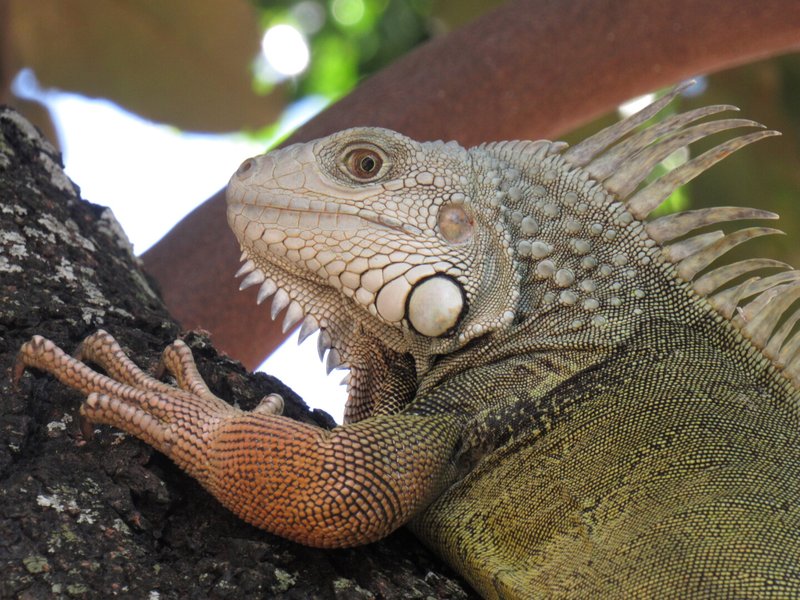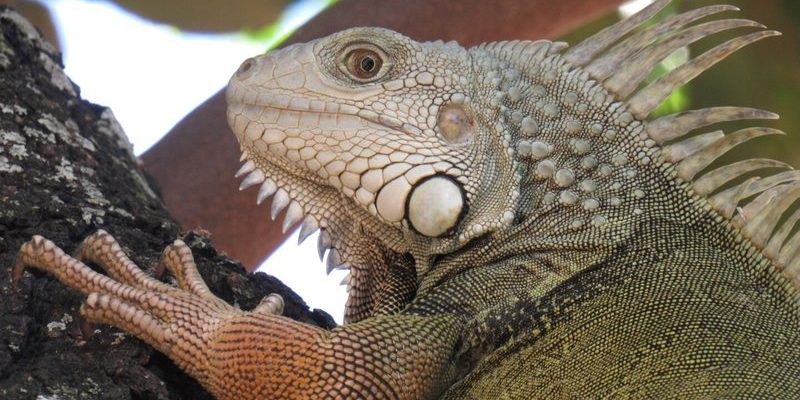
You might be wondering where it all began or how these creatures came to be such a popular pet and beloved species in various ecosystems. Let’s dive into the evolutionary tale of the green iguana and explore its lineage, habits, and the role it plays in the environment. It’s like tracing a family tree but for a lizard, complete with twists and turns that reveal how the iguana fits into the grand scheme of life on Earth.
Where Do Green Iguanas Come From?
To understand the green iguana, we need to journey back in time. These reptiles belong to the family Iguanidae and are native to Central and South America, as well as the Caribbean islands. They have adapted to various environments, from rainforests to arid habitats. This adaptability has helped them thrive in different climates and conditions.
The green iguana’s ancestors date back to approximately 200 million years ago, during the age of the dinosaurs. Imagine a time when massive creatures roamed the Earth, yet the iguanas were small, scurrying around in the shadows. Over millions of years, they evolved to become the creatures we recognize today. With their long tails and distinct dewlap (the flap of skin under their throat), green iguanas have developed unique features suited for survival in the wild.
Interestingly, green iguanas are part of a larger group known as saurians, which includes all lizards and their relatives. By studying fossils and genetic data, scientists have pieced together how these creatures have changed throughout history, revealing a deeper connection to their prehistoric roots.
Physical Adaptations of Green Iguanas
One of the most striking features of green iguanas is their coloration. This bright green hue is not just for show; it’s a clever adaptation that helps them blend into their surroundings. In the lush, green canopies of their native habitats, their coloring allows them to hide from predators and ambush prey. It’s like having a built-in camouflage!
Additionally, green iguanas possess strong, sharp claws that help them climb trees with ease. Their long tails serve multiple purposes: they act as a balance while climbing and can also be used as a defensive weapon if threatened. If you’ve ever seen one whip its tail around, you know it can deliver a surprising blow!
Moreover, their herbivorous diet has shaped their digestive system. Unlike carnivorous reptiles, green iguanas have evolved to efficiently process plant materials, allowing them to thrive on a diet primarily consisting of leaves, flowers, and fruits. Their large, complex intestines play a crucial role in extracting nutrients, making them well-suited for their leafy meals.
The Role of Green Iguanas in Their Ecosystem
Green iguanas hold an essential place in their ecosystems. Think of them as nature’s gardeners. By feeding on leaves and fruits, they help control plant growth and contribute to seed dispersal. This means that as they munch on fruits, they’re also helping to plant new trees and plants in their environment. It’s a win-win for both the iguanas and the forest!
Another important aspect of their role is their position in the food chain. While they mostly eat plants, green iguanas are also prey for larger predators like birds of prey, snakes, and even some mammals. This keeps the ecosystem balanced, as each species plays a part in maintaining nature’s harmony.
However, as habitats have been altered due to human activity, green iguanas face challenges like habitat loss and competition from invasive species. Understanding their role in the ecosystem helps us realize the importance of protecting these creatures and their habitats.
Domestication and Popularity as Pets
In recent years, green iguanas have become popular pets due to their stunning appearance and relatively low maintenance. However, owning one comes with responsibilities. Just as owning a puppy requires time and care, so does caring for a green iguana. They need plenty of space, the right temperature, and a proper diet to flourish.
Interestingly, the popularity of green iguanas as pets can be traced back to the 1970s when they started appearing in households across the United States. This trend grew rapidly as more people fell in love with their unique personalities and vibrant colors. However, many pet owners might not realize that these creatures can live for 20 years or more in captivity! That’s a long-term commitment, for sure.
For those considering a green iguana as a pet, it’s essential to do thorough research. They require specific housing, a varied diet, and regular veterinary care. It’s like caring for a small dragon! So, if you’re up for the challenge, a green iguana can be an incredibly rewarding companion.
Green Iguanas in Culture and Media
Green iguanas have also made their mark in popular culture. They’ve appeared in movies, television shows, and even as mascots in various events. One might recall seeing an iguana perched on the shoulder of a character in a movie or wandering through a vibrant jungle scene. This representation has contributed to their allure and fascination among people.
Moreover, many cultures recognize the green iguana as a symbol of tropical regions, often reflecting the biodiversity of their natural habitats. They are a source of inspiration for artists and creators, showcasing the beauty and importance of preserving wildlife. Just as we admire their vibrant colors, we should also appreciate the inherent value they bring to our ecosystems.
However, it’s crucial to remember that while they are celebrated in media, green iguanas are living creatures with specific needs. Recognizing them as more than just a character or decoration is key to understanding their importance in our world.
Conservation Efforts and Future Challenges
As the world evolves, so do the challenges that green iguanas face. Habitat destruction, climate change, and illegal pet trade threaten their survival. Conservation efforts are underway to protect their natural habitats and ensure their populations remain stable. Wildlife reserves and education programs are essential in raising awareness about the importance of these reptiles in our ecosystems.
Many organizations are dedicated to conserving green iguanas and other wildlife. They work on habitat restoration projects and promote sustainable practices that benefit both humans and wildlife. Supporting these initiatives can lead to a brighter future for these beautiful creatures.
You might wonder what you can do to help. Simple actions like spreading awareness about iguana conservation and supporting eco-friendly practices can make a difference. Whether you’re an animal lover, a nature enthusiast, or just someone who enjoys watching these fascinating creatures, every little bit helps.
The evolutionary history of the green iguana is not just a story of survival; it’s a testament to adaptability, resilience, and the interconnectedness of life. From their ancient ancestors to their role in ecosystems today, these reptiles continue to inspire curiosity and admiration. Whether as pets, symbols in culture, or vital players in their habitats, green iguanas are a reminder of nature’s beauty and complexity.
As we learn more about these fascinating creatures, we can appreciate their place in the world and the importance of protecting them for future generations. So, the next time you see a green iguana, take a moment to admire not just its beauty but also its incredible journey through time.

